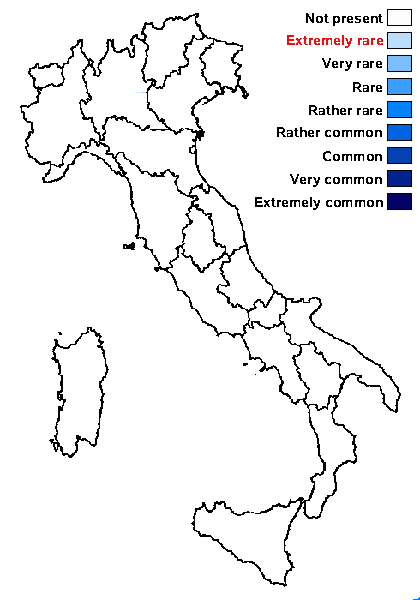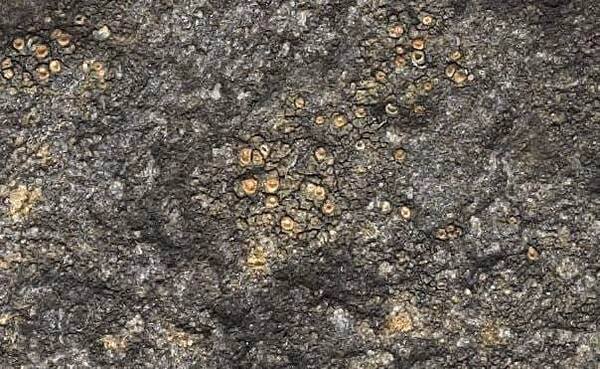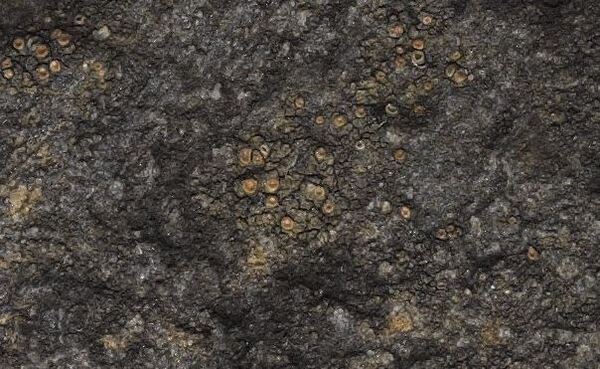Gyalecta sudetica Vězda
Ann. Zool. Bot., Bratislava, 13: 3, 1965
Synonyms:
Distribution:
Description: Thallus crustose, episubstratic, 0.1-0.5 mm thick, ecorticate, continuous to rimose-subareolate in thicker parts, dark greenish grey. Apothecia 1-2.5 mm across, adnate, round or angular by mutual compression, with an initially concave, then flat, flesh-coloured, thinly white-pruinose disc, and a thick, raised, usually smooth proper margin which is rarely covered by a thalline layer in lower parts. Proper exciple paraplectenchymatous, 150-200(-250) µm thick laterally, reddish brown in outer part, colourless within; epithecium pale reddish brown, inspersed with minute granules; hymenium colourless, 100-120 µm high, the hymenial gel hemiamyloid; paraphyses septate, 2-2.5 µm thick at mid-level, the apical cells not swollen; hypothecium colourless. Asci 8-spored, cylindrical-clavate, thin-walled, lacking an apical apparatus or tholus, K/I+ blue, with uniseriate or partly biseriate spores. Ascospores submuriform, with 7(-9) transverse septa and 1-2 longitudinal septa, hyaline, fusiform, caudate at one or both ends, 27-40 x 5-7 µm. Photobiont trentepohlioid. Spot tests: K-, C-, KC-, P-, UV-. Chemistry: without lichen substances. Note: on calcareous schists in the montane belt of Central European orobiomes, with a few records from the Eastern Alps (Austria). To be looked for in Italy.
Growth form: Crustose
Substrata: rocks
Photobiont: Trentepohlia
Reproductive strategy: mainly sexual

Predictive model
Growth form: Crustose
Substrata: rocks
Photobiont: Trentepohlia
Reproductive strategy: mainly sexual

Predictive model
 INDEX FUNGORUM
INDEX FUNGORUM
 GBIF
GBIF



